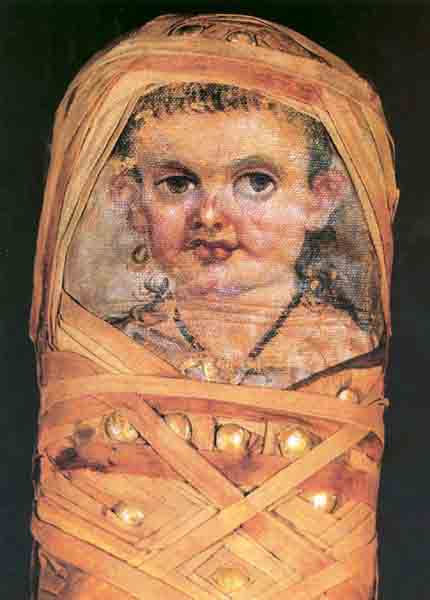
Rosy lips, tousled curls and wide brown eyes enliven this first-century A.D. funerary portrait of a boy. The mummy wrappings are carefully arranged around the painting to appear to expose the face and neck of the body within.
The mummy was discovered at Hawara in Egypt’s Fayum region, where British archaeologist Sir William Flinders Petrie found about 150 of these images, now known as Fayum portraits. The diamond pattern of the linen wrappings and the gilt stucco studs are typical of mummies from Hawara, which served as a cemetery for Roman-Egyptians living in the neighboring town Arsinoë.

Roman portrait painting and traditional Egyptian funerary art are bound together in the Fayum mummies, which appeared soon after Egypt fell to Rome at the Battle of Actium in 31 B.C. Native Egyptians had previously preserved mummies in coffins with sculpted, mask-like faces. Roman-Egyptian artists, however, created more realistic portraits, which were placed directly above the deceased’s face and bound in linen wrappings. Children’s portraits were painted posthumously, on a square of linen, as shown here, while adults’ portraits, executed in encaustic (colored beeswax) or tempera on a thin hardwood panel, were usually commissioned during life and displayed in the home until death.
Already a library member? Log in here.
Institution user? Log in with your IP address.

